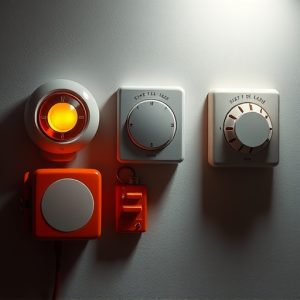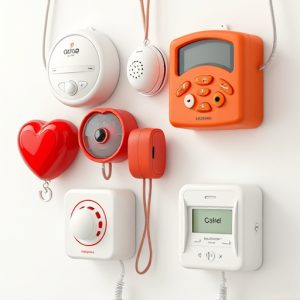Personal Distress Signals: Tracking Tech for Enhanced Safety with Optimal Alarm Features
Personal distress signals, with unique alarm sounds and GPS tracking, enhance safety (especially in…….
Personal distress signals, with unique alarm sounds and GPS tracking, enhance safety (especially in unfamiliar or dangerous areas) by ensuring quick response times from bystanders or emergency services. The optimal best personal alarm sound distance is 50 meters, with decibels exceeding 100 to penetrate noise; ideal sounds are high-pitched or distinct patterns. Individual preferences matter, so testing different sounds is advised. These signals provide peace of mind, quickly attracting help both indoors and outdoors, making them indispensable tools for personal security in diverse environments.
Personal distress signals with tracking capability are essential tools for enhancing individual safety in today’s world. Understanding these signals, from recognizing subtle body language to identifying specific vocal cues, is crucial for timely intervention. Choosing the best personal alarm sound and distance ensures maximum effectiveness during emergencies. This article explores these aspects, focusing on selecting optimal alarm sounds tailored to your needs and tracking technologies that provide peace of mind by enabling real-time location monitoring.
- Understanding Personal Distress Signals: Why They Matter
- Choosing the Best Personal Alarm Sound and Distance for Your Safety
- Tracking Technology: Enhancing Personal Security with Distress Signal Devices
Understanding Personal Distress Signals: Why They Matter
Personal distress signals, often manifesting as unique alarm sounds designed to grab attention, play a pivotal role in ensuring one’s safety and well-being. Understanding these signals is paramount, especially when considering the best personal alarm sound distance. In today’s world, where individuals frequently find themselves in unfamiliar or potentially dangerous situations, these alerts serve as lifelines, enabling quick response from bystanders or emergency services.
The significance of personal distress signals lies not only in their ability to communicate urgency but also in their versatility for different environments and user preferences. Whether in urban areas with bustling crowds or remote outdoor settings, the best alarm sound should be distinct, loud enough to penetrate ambient noise (considering the optimal distance), and easily recognizable. This ensures that help can arrive promptly, making personal distress signals an indispensable tool for anyone venturing into unknown territories.
Choosing the Best Personal Alarm Sound and Distance for Your Safety
Selecting the optimal personal alarm sound and distance is paramount for ensuring your safety. The best alarm sound should be distinct, loud enough to startle potential threats, and easily recognizable—consider high-pitched tones or unique patterns that can quickly alert others nearby. This choice is deeply personal; what works for one person might not be effective for another, so it’s advisable to test different sounds before settling on the ideal option.
Distance plays a crucial role in the effectiveness of a personal alarm. The recommended range varies based on factors like noise levels and potential hazards in your environment. As a general guideline, aim for a sound that can clearly carry at least 100 decibels (dB) within a 50-meter radius. This ensures that your alarm is heard both indoors and outdoors, increasing the likelihood of drawing attention to your location during an emergency.
Tracking Technology: Enhancing Personal Security with Distress Signal Devices
Tracking technology has revolutionized personal security, especially with devices that incorporate distress signals. These innovative tools are designed to provide individuals with a powerful means of protection and peace of mind. When activated, distress signal devices emit a distinct and high-decibel alarm sound, often described as one of the best personal alarm sounds available in the market. This loud and attention-grabbing signal serves multiple purposes: it alerts nearby bystanders or authorities about an individual’s distress, potentially deterring potential threats, and providing vital time for help to arrive.
The tracking capability of these devices takes it a step further. By incorporating GPS technology, users can pinpoint their exact location in case of an emergency. This real-time tracking feature ensures that rescue teams or loved ones can swiftly locate the person in need, regardless of the surrounding environment or conditions. Whether in urban areas with bustling streets or remote landscapes, these distress signal devices offer a reliable solution by bridging the gap between the user’s current position and potential rescuers, all within an impressive best personal alarm sound distance.
Personal distress signals equipped with tracking technology offer a powerful tool for enhancing individual safety. By understanding the importance of these signals and choosing the optimal alarm sound and distance, users can ensure they are prepared in emergencies. Tracking capabilities provide an additional layer of security, allowing loved ones or emergency services to quickly locate the wearer. With the right device, individuals can feel more confident and secure while navigating their daily lives.


